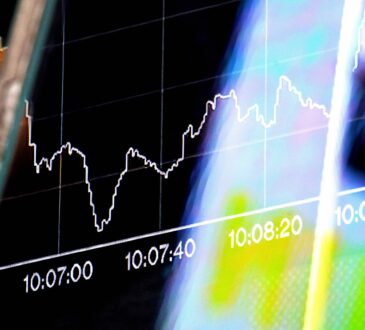
What is Market Value Of Equity?
Market value of equity is the total dollar value of a company’s equity and is also known as market capitalization. This measure of a company’s value is calculated by multiplying the current stock price by the total number of outstanding shares. A company’s market value of equity changes as the stock price and number of shares fluctuate. Market value of equity measures a company’s size and aids investors in diversifying investments by company size and risk level.
Investors can find the total number of shares outstanding in the equity section of a company’s balance sheet.
Key Takeaways
- Market value of equity, or market capitalization, is determined by multiplying the current stock price by the total outstanding shares.
- This value is used by investors to assess company size and helps diversify investments across different risk levels.
- Market value of equity fluctuates with stock price changes, especially during significant events like earnings releases.
- Large companies typically have stable market values, while small, thinly traded companies are more volatile and susceptible to manipulation.
- Understanding market value of equity helps compare it with other valuations like book value and enterprise value.
How Market Value of Equity Reflects Company Worth
A company’s market value of equity can be thought of as the total value of the company decided by investors. The market value of equity can shift significantly throughout a trading day, particularly if there are significant news items like earnings. Large companies tend to be more stable in terms of market value of equity owing to the number and diversity of investors they have. Small, thinly-traded companies can easily see double digit shifts in the market value of equity because of a relatively small number of transactions pushing the stock up or down. This is also why small companies can be targets for market manipulation.
Investopedia / Julie Bang
Calculating the Market Value of Equity: A Step-by-Step Guide
Calculate the market value of equity by multiplying the number of shares outstanding with the current share price. You can accomplish this in three steps:
- Determine the current share price of the company.
- Locate the total number of outstanding shares from the company’s balance sheet.
- Multiply the current share price by the total number of outstanding shares.
For example, Apple stock was trading at $188.72 per share on March 28, 2019. The company’s stock buy back program reduced outstanding shares from over 6 billion to 4,715,280,000. So, the market equity of capitalization is calculated as follows:
Stock Price ($188.72) x Shares Outstanding (4,715,280,000) = $889,867,641,600
For simplicity, people usually quote the above market value of equity as $889.9 billion.
Comparing Market Value of Equity to Enterprise and Book Value
Market value of equity can be compared to other valuations like book value and enterprise value. A company’s enterprise value incorporates its market value of equity into the equation along with total debt minus cash and cash equivalents to provide a rough idea of a company’s takeover valuation.
The market value of equity is also distinct from the book value of equity. The book value of equity is based on stockholders’ equity, which is a line item on the company’s balance sheet. A company’s market value of equity differs from its book value of equity because the book value of equity focuses on owned assets and owed liabilities. The market value of equity is generally believed to price in some of the company’s growth potential beyond its current balance sheet. If the book value is above the market value of equity, however, it may be due to market oversight. This means the company is a potential value buy.
Understanding Market Profiles and Capitalization Levels
In general, there are three different levels of market capitalization, and each level has its own profile. It serves as a key measure of a company’s size, calculated by multiplying the current stock price by the total number of outstanding shares. It’s a dynamic measure that can fluctuate significantly due to changes in stock prices, reflecting investor perceptions of company value.
Companies with less than $2 billion in market capitalization are considered small caps, or small caps. Companies with a market capitalization between $2 billion and $10 billion are called mid-caps. Companies with a market capitalization over $10 billion are considered large capitalization, or large caps.
The Bottom Line
Each level has a profile that can help investors gain insights into the behavior of the company. Small caps are generally young companies in the growth stage of development. They are risky but have higher growth potential. Large caps are mature companies; they may not offer the same growth potential, but they can offer stability. Mid-caps offer a hybrid of the two.
By owning stocks in each category, investors ensure a certain amount of diversification in assets, sales, maturity, management, growth rate, growth prospects and market depth. They can diversify their portfolios by considering companies with varying market capitalizations. Understanding the market value of equity is crucial for making informed investment decisions, particularly in assessing growth potential and risks.




